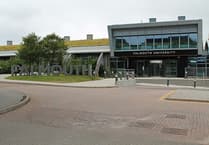NEW findings reveal that the most common industries people in the South West work in are human health and social work.
Income protection experts Eleos, www.eleos.co.uk, have analysed data from the Office for National Statistics 2021 Census, to reveal the proportion of the population that are in work, and which are the most common industries to work in.
According to the data approximately 2,717,445 South West residents are economically active (excluding full students), with 55.3 per cent in employment and 2.1 per cent looking for work. For those that are full-time students and also economically active, they make up just 2.1 per cent of the population, with 74,728 of these in a job.
On the other hand, 1,918,616 (40.5 per cent) are economically inactive, the most common reason for which is retirement. Retired people account for 25.6 per cent of those who are economically inactive.
In contrast, only five per cent are students who aren’t looking for work, while those looking after their family and home and those long-term sick or disabled make up just 3.7 per cent each.
Ranking top as the industry with the most workforce is ‘human health and social work.’ A whopping 410,909 people are working in this industry, making this 15.3 per cent of the working population of South West.
The top five workforce industries (including full-time students) in South West include: Human health and social work activities, number of workforce in industry - 410,909; Wholesale and retail trade, including the repair of motor vehicles and motorcycles - 400,981; Education - 259,274; Construction - 245,894; Manufacturing - 198,513.
The study also found that for those who work, 1,823,922 (67.7 per cent) work full-time, while 868,412 (32.3 per cent) work part-time.
Speaking on the findings, Kiruba Shankar Eswaran, CEO of Eleos said: “The number of economically active people is a key metric in assessing the overall economic health of a city. High levels of economic activity often correlate with a vibrant and growing economy, while low levels may indicate economic challenges.”

.jpeg?width=209&height=140&crop=209:145,smart&quality=75)



Comments
This article has no comments yet. Be the first to leave a comment.